Among the Great Odes of 1819 was this curious and fragmentary ballad, a work that Keats scholar, Robert Gittings, has rightly called ‘a magical poem’. And any analysis, he notes, must begin with the following warning: ‘that nothing one says either about its origins or its effects can fully explain it.’
La Belle Dame sans Merci (The Beautiful Lady without Pity), by John Keats, is one of the most well known ballads of the English language, and certainly of the English Romantic tradition. As must be clear to anyone who has read Keats to any extent, much of his poetic inspiration came from the natural world. According to Keats scholar, Robert Gittings, it was his walking tour along the Scottish isles of Iona and Staffa, in the middle of 1818 in particular, which ‘gave him more of the raw materials of poems than any other places’. Indeed, in these islands ‘lay for him the seeds of the full poetic growths of the following year’ of 1819, which included his Ode on a Grecian Urn, Ode to Psyche, and Ode to a Nightingale (Gittings, 338). Among these great odes is the curious and fragmentary ballad, La Belle Dame sans Merci, a work that Gittings has rightly called ‘a magical poem’. And any analysis of this poem, he notes, must begin with the following warning: ‘that nothing one says either about its origins or its effects can fully explain it.’ (Gittings, 439, emphasis added). How apt! Its content is mysterious indeed.
What chiefly interests me about this poem is its blend of the historical and the fantastical, or in this case the medieval and the faery. Graham Handley notes that this story of unhappy love appears to be one of ‘romantic agony’, and even a ‘demoniac possession’ (Handley, 57). The ballad is comprised initially of a kind of question-and-answer structure. The speaker has chanced upon a knight-at-arms, presumably in a meadow or forest area, (‘at-arms’ is to denote that this knight was both mounted, and armed with a weapon, most likely a sword). This knight is ‘Alone and palely-loitering’—gorgeous consonance!—and this speaker wonders what could be the matter. He is not only loitering, appearing aimless and lost, but is also pale and apparently unwell. These details are apparently the chief concern of the speaker. And the surrounding environment seems to share in the knight’s woe in a kind of subjective landscape projection, with the sedge (a grassy plant) having ‘wither’d from the lake’, while ‘no birds sing’.
And the speaker notices some other curious details. There is a lily on his forehead, perhaps ruffled into his curls of hair, ‘And on thy cheeks a fading rose / Fast withereth too’, which is a symbolic way of saying that the colour has drained from his once-blushing face. The knight responds, in stanza four, and tells of the cause of his woe:
I met a lady in the meads, Full beautiful—a faery’s child, Her hair was long, her foot was light, And her eyes were wild.
Right away, we grasp that this is no ordinary lady. She is a wild woman from the world of nature, from out there in the greenery and the forest, a faery’s child. Later he tells of her having led him to an ‘elfin grot’ (that is, a kind of picturesque cave), further emphasising her separateness from the world of normality and human affairs. The way in which she speaks, too, is odd and unsettling, indicating her inhumanness. He recalls that she declared, ‘in language strange’, the words ‘I love thee true.’ The lady’s beauty and mystical allure put a spell upon the knight, and he was lost in the rapture of a fantastic eros:
I set her on my pacing steed, And nothing else saw all day long, For sidelong would she bend, and sing A faery’s song.
As much as we may be tempted to characterise this encounter as wholly spiritual, as some incorporeal vision or illusion, I do not think this was Keats’ intention. Yes, there are clearly intimations that this is a kind of demoniac spirit, especially in the ninth and tenth stanzas, as this lady lulls him to sleep, inducing him to dream of horrible things: all those kings, princes, and warriors before him who had similarly been afflicted by her allure. And I find the image of stanza eleven, as the knight describes ‘their starved lips in the gloam, / With horrid warning gapèd wide’, to be particularly evocative and haunting, lending to the woman’s supernatural character. But this is also a real and grounded experience. The physicality and sensual character of the knight’s experience is emphasised through many tactile gestures. He places a garland (a wreath of flowers) upon the lady’s head, and bracelets on her wrists. In a suggestive few lines he also tells the speaker of her ‘sweet moan’, as she looked upon and loved him. Her closeness with the environment indicates that she may be a nature spirit. She is ethereal in some sense, yet she is also thoroughly embodied, finding roots for him on the forest floor, and ‘honey wild, and manna dew’. And think again of her introduction. She did not appear as an apparition, wraith-like and wispy, but was found first ‘in the meads’, the meadows, and the knight noticed the lightness of her feet upon the grasses. Like the sirens of Greek mythology, who were both embodied and supernatural, she lead him to her abode through a ‘faery’s song’, manipulating sound and harmony. Upon waking from these terrible dreams, the knight sombrely replies:
And this is why I sojourn here, Alone and palely loitering, Though the sedge is withered from the lake, And no birds sing.
To be sojourning and loitering at the same time is an interesting contrast of states. Perhaps it is best explained by the change he had undergone in the realm of his subjective experience. On the outside, and for the eyes of the speaker, this knight appears to be loitering, hanging about with no obvious purpose, though on the inside he is sojourning through his mind and grappling with dreams and erotic experience. In many ways this is the experience of the poetic imagination—to be both still and in motion; to be isolated in the body and yet also to be journeying through the panoply of human experience.
Works cited:
Gittings, Robert. John Keats (biography). London: Penguin Books, 1968.

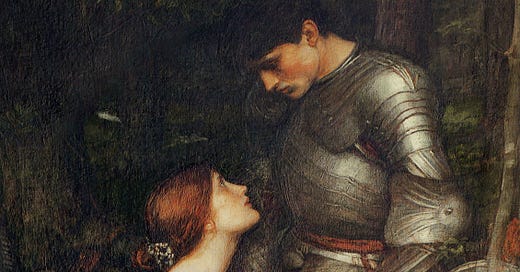



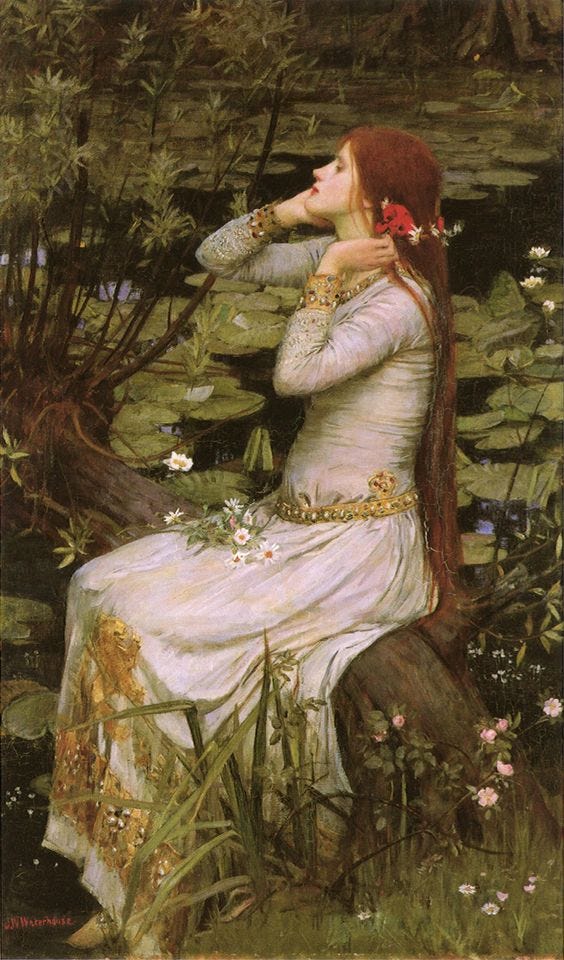
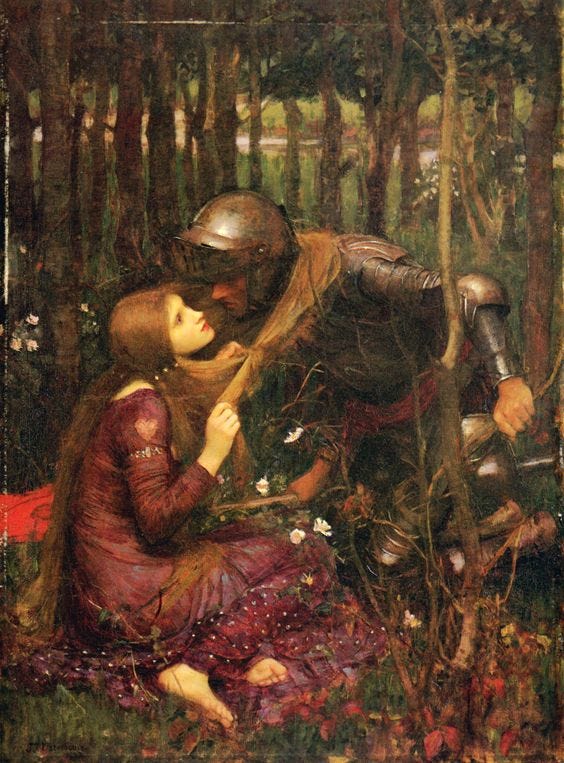
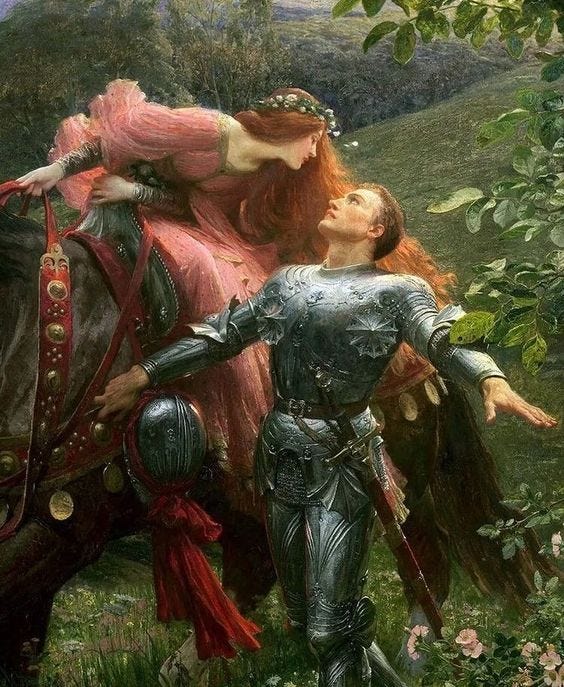
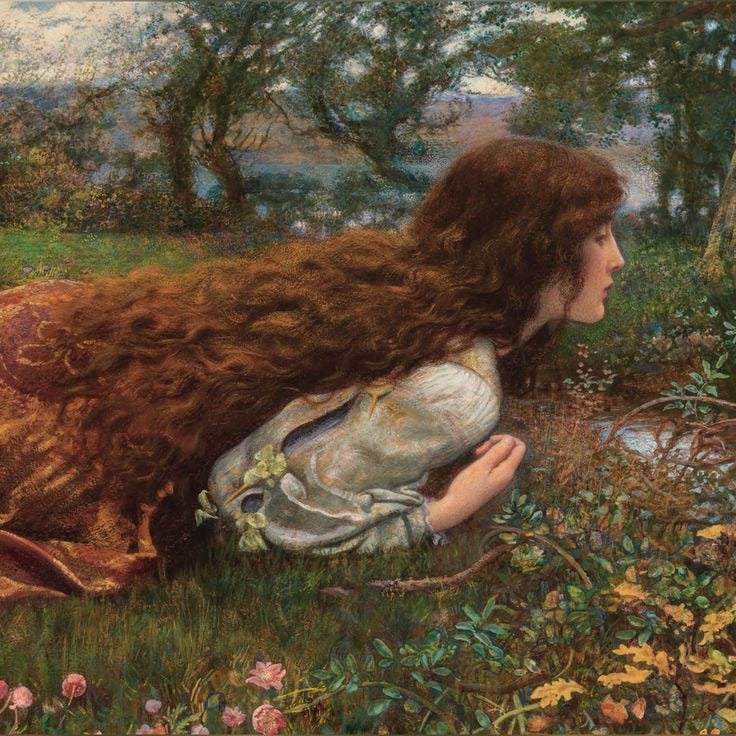
Very enjoyable, I especially liked the loitering and journeying occurring at once. It very succinctly sums up my state of recent retirement from running at top speed for many years to sitting still and creating written things. Thanks